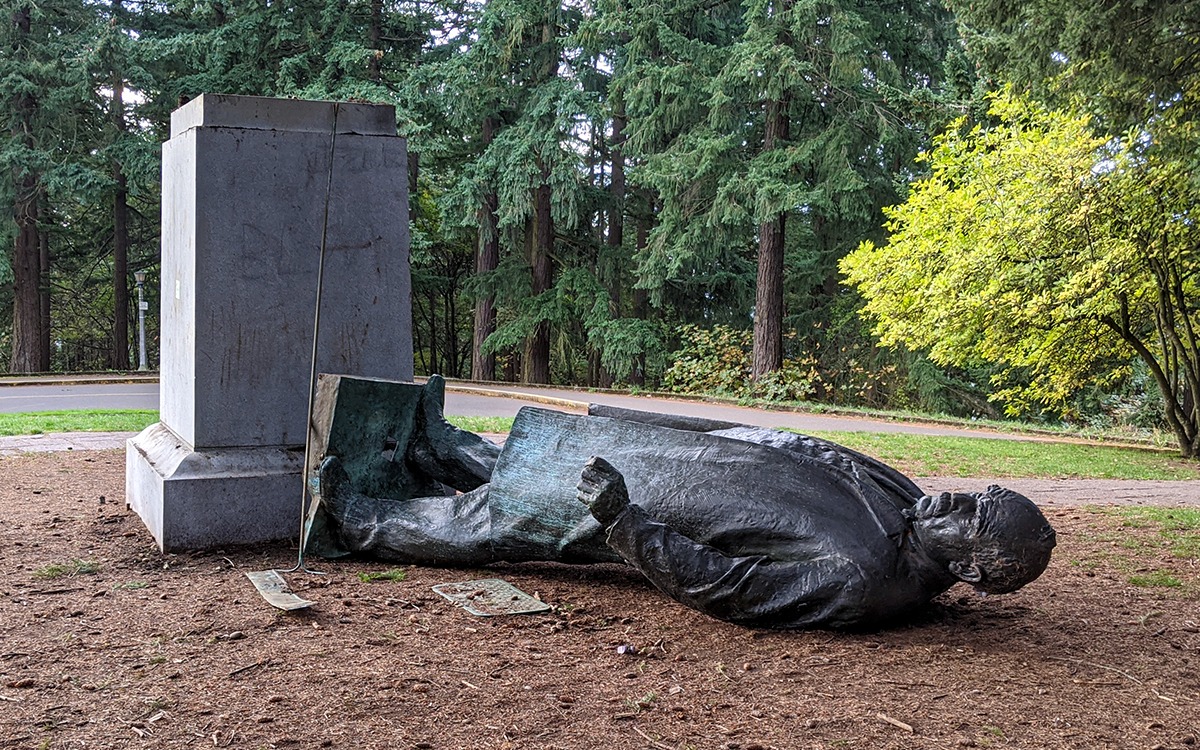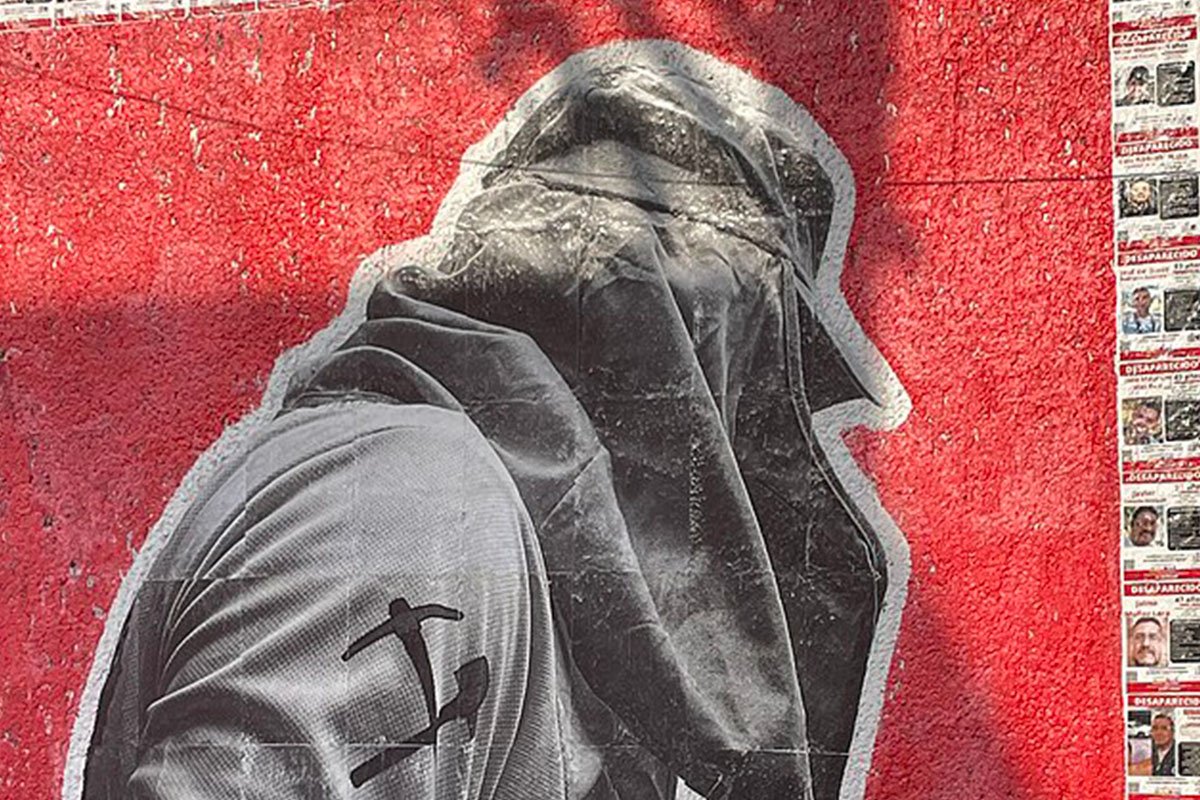
In 2020, almost 100 Confederate monuments were removed in the United States. One year later, 73 additional monuments to the Confederacy were removed or renamed across the country.
Many of these monuments, particularly in 2020, were displaced as a result of protests following the murder of George Floyd by a White police officer. As CNN reported, “The removals and renamings come at a time when Americans continue to grapple with whether Confederate monuments belong in public spaces. These statues stand as symbols of racism in the US dating back to the Civil War.”
What happened to those monuments? How does the country move forward and create new monuments that better reflect the history, struggles, and culture of all people? And why do monuments even matter? A panel organized by the Mellon Foundation grappled with these questions in monument-making, attempting to acknowledge America’s painful histories, our ongoing fight against racism, and the lessons we must carry into the future.
Heavy History
Mellon Foundation President Dr. Elizabeth Alexander talked with idris brewster, founder and executive director of Kinfolk Foundation; Carol Coletta, president and CEO of Memphis River Parks Partnership; visual artist and architect Amanda Williams; and Carolina A. Miranda, art and design columnist at Los Angeles Times. The panel met in the midst of a five-year $250 million commitment by the Mellon Foundation to support new American commemorative projects. Called The Monuments Project, the program launched in 2020.
“Some communities must wrestle with whether a statue is worth preserving.”
That was the year of Floyd’s murder, when protests and calls for racial justice gripped the nation. People came together in multiple cities to physically deplatform some of the many statues, plaques, and other monuments glorifying heroes of the Confederacy. Alexander described these statues as “monuments that represent harm.” Other places officially tore down their statues—often quietly, sometimes in the middle of the night—following public outrage.
One of those cities was Richmond, VA, where the remnants of a huge, 60-foot statue of General Robert E. Lee are now scattered in a storage facility in an undisclosed industrial area. Other Confederate monuments were shipped to museums or cemeteries, even to private collections. In Bristol, England, protestors brought down a statue of 17th-century slave trader Edward Colston and dumped it in the waters of the local harbor.
These traditional statues, some produced from a cast, are heavy, constructed of stone or metal, and often weigh several tons. “Once you get them down on the ground and realize how big they are, you have a real problem on your hands,” Sarah Beetham, the chair of liberal arts and an assistant professor of art history at the Pennsylvania Academy of the Fine Arts, told NBC News. NBC’s report goes on: “Some communities must wrestle with whether a statue is worth preserving.”
Controlling Memory
Communities now must also consider what figures or events they want to grace their town squares and in what form. Amanda Williams, who along with visual artist Olalekan Jeyifous is creating a Brooklyn park monument for Shirley Chisholm, spoke of the importance of monuments in allowing people to remember. In a time of political and cultural unrest, with AI and deepfakes—videos of a person that are digitally altered to appear as someone else—manipulating perception, Williams empathized the essentialness of having a historical record: “Things that I saw go away, I know they were there.”
Sign up for our free newsletters
Subscribe to NPQ's newsletters to have our top stories delivered directly to your inbox.
By signing up, you agree to our privacy policy and terms of use, and to receive messages from NPQ and our partners.
When we name the things we interact with all the time after people and events, “the everyday becomes monumental.”
When books are banned and histories denied, “these things become important again,” Williams said, linking a lack of respect in public places and lack of social discourse to a dearth of history as presented in the public square. It’s hard for everyone to know what happened unless there is a record, to always believe it unless they see it. In this way, monuments can be used to control memory. By contrast, brewster sees an opportunity to use monuments as a liberating force, “a tribute to our collective memories and our values.”
“Social reality is created by public knowledge, but it is also mirrored in monuments,” Marija Kulišić and Miroslav Tuđman wrote in their paper “Monument as a Form of Collective Memory and Public Knowledge.” What does a society believe is worthy of public remembrance in monument form, and what do they want to forget? Who decides what figures and which historical events get immortalized—and how?
A recurring theme in the panel discussion was recognizing that many kinds of objects, places—even names—can be a kind of monument, not simply statues. When we name the things we interact with all the time after people and events, “the everyday becomes monumental in that way,” Williams said. Take, for example, the many places named after Christopher Columbus. “What does it mean for one city to have 10 monuments to Columbus and a street and an elementary school.…How do we decide what gets named what?”
“There’s an infinite amount of lost history from Black and brown communities that needs to be uncovered, especially in America.”
Technological Advances and Simplicity
Just as mere naming can be a kind of commemoration, the structures and forms of monuments themselves are continually changing and evolving. Today, a monument doesn’t have to be represented in the traditional form. Take Kinfolk, founded by members who came together to advocate for the removal of the Christopher Columbus statue in Columbus Circle in New York City. The technology of Pokémon GO inspired Kinfolk to create digital monuments and use apps to provide additional context for existing monuments. Harmful statues may not always be removed, but new information can still shed light on what they mean to people from history and people living today.
Advocates were not able to get the Columbus statue removed; New York City instead made it a landmark. But brewster told Hypebae in an interview, “For us, it was a defeat, but it also showed us that we can’t really wait for our government to take action. We have to figure out a way to do it ourselves and not have to rely on others. There’s an infinite amount of lost history from Black and brown communities that needs to be uncovered, especially in America. Technology allows us to close the gap and better preserve, as well as archive, our history.”
Sometimes the most powerful monument can also be the simplest. As Los Angeles Times columnist Carolina A. Miranda mentioned on the panel, even the empty pedestals from removed Confederate statues speak volumes: a testament both to painful history and the contemporary actions of fighting racism.
Miranda advocated letting such a pedestal sit empty for a time before removing it or placing a new monument on its surface. “For me,” she said, “it’s most compelling when people can kind of sit with those sites a little bit and really appreciate the action that it took to get it removed.”











